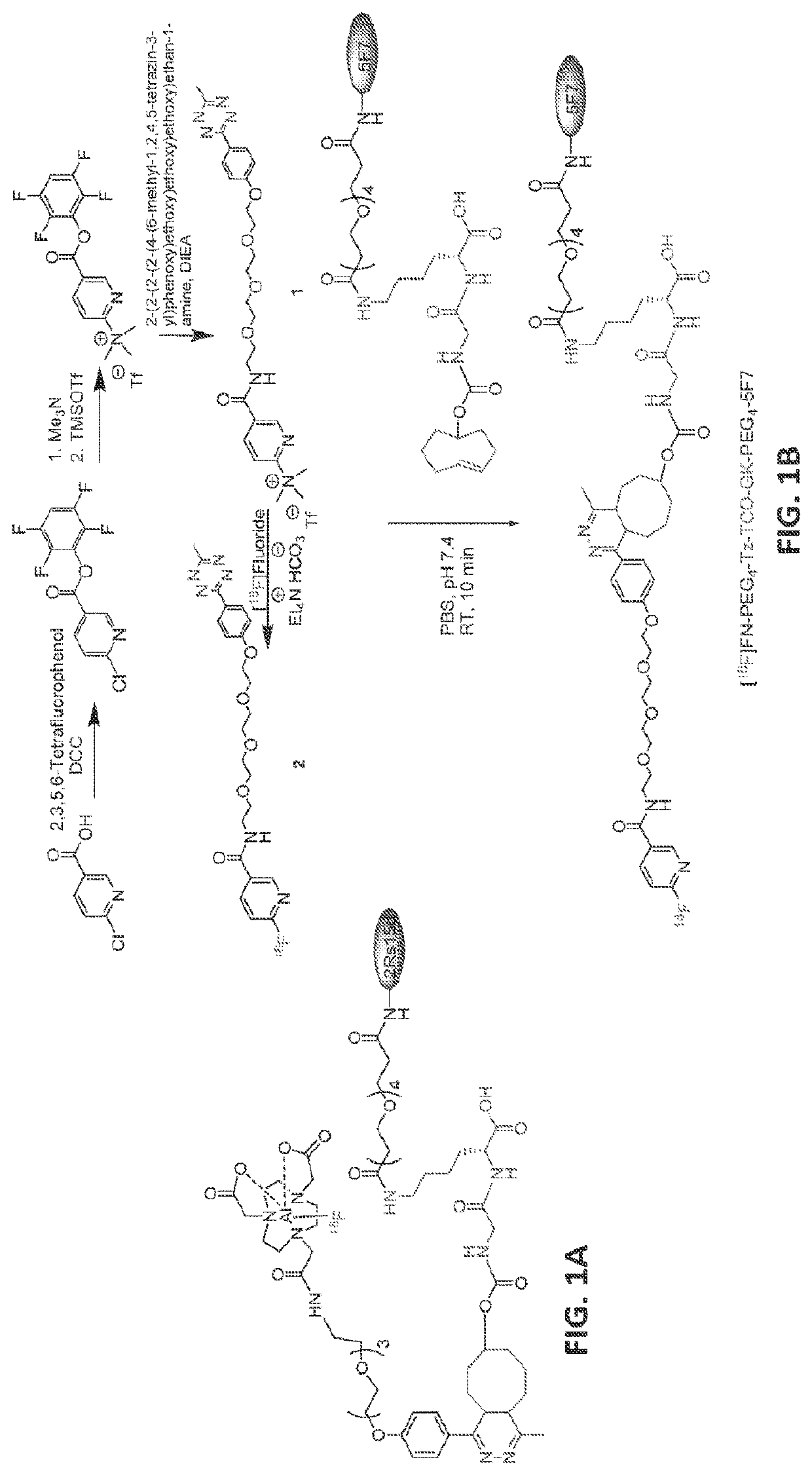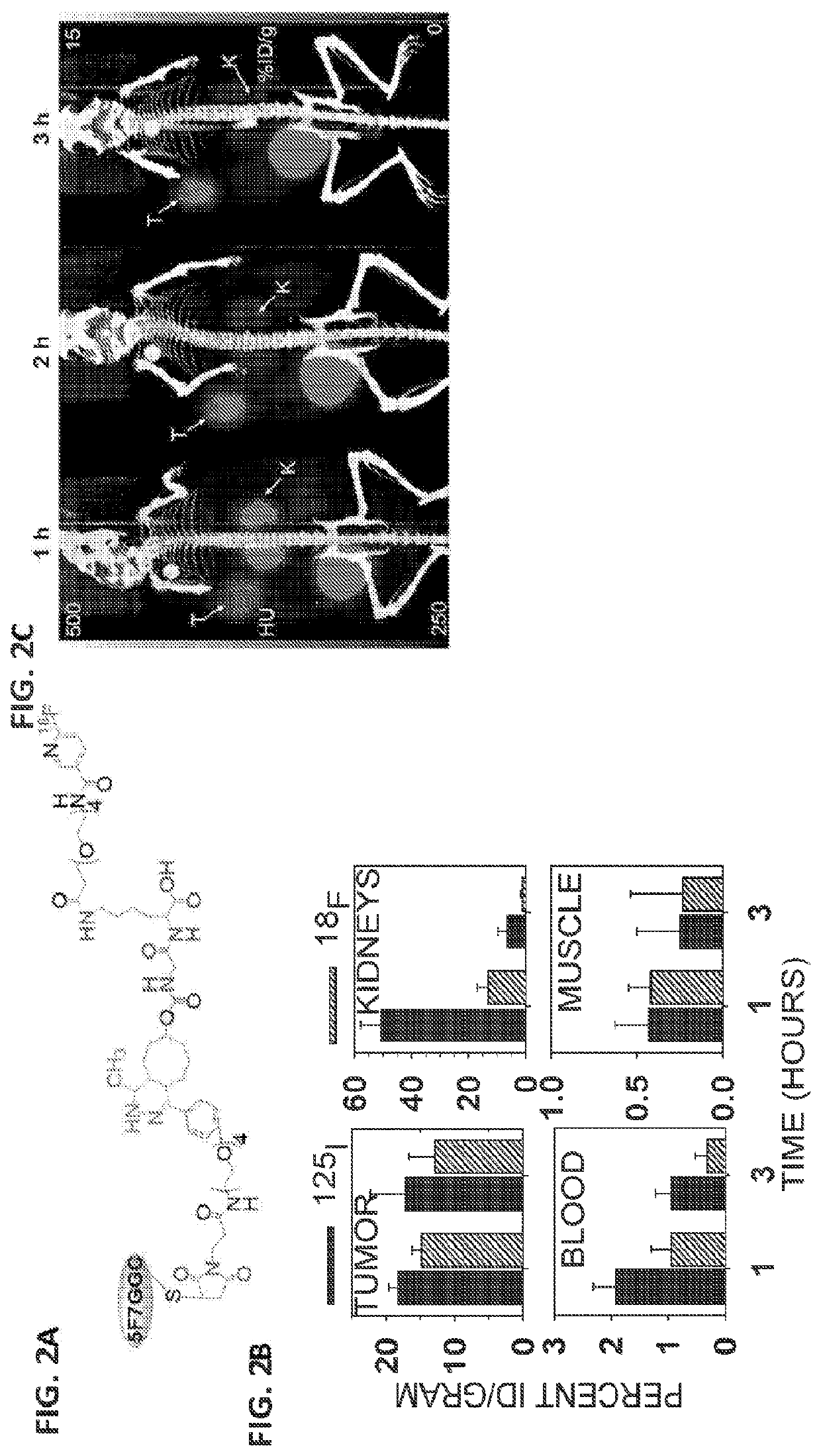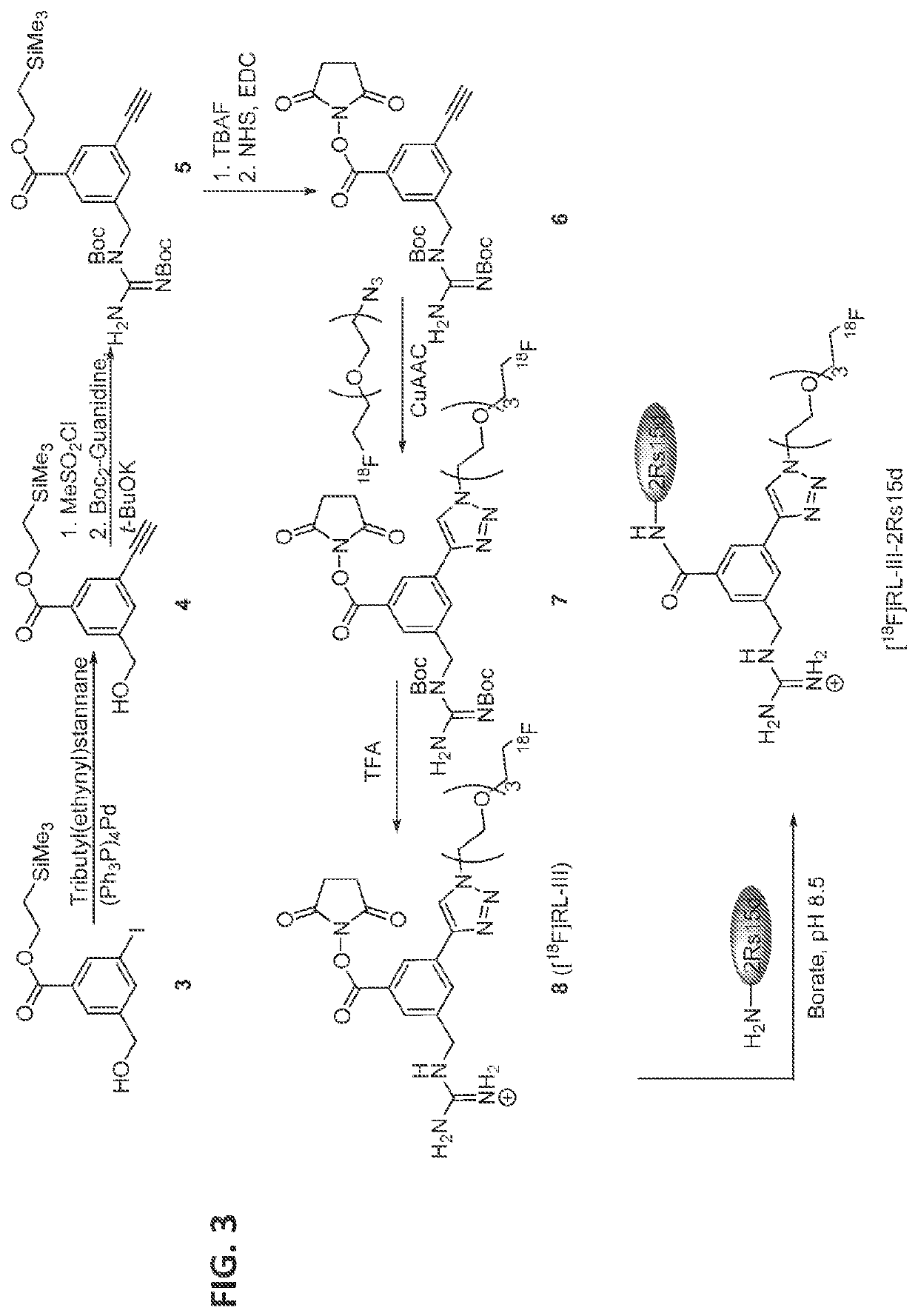18f-radiolabeled biomolecules
a biomolecule and 18fradiolabeled technology, applied in the field of 18fradiolabeled biomolecules, can solve the problems of radioactive degradation products that can then rapidly escape from tumor cells, and no longer have sufficient radioactivity within tumor cells to allow imaging or treatment of tumors, etc., to preserve the biological activity of the biomolecule, minimize the loss of radioactive halogen, and maximize the effect of retention
- Summary
- Abstract
- Description
- Claims
- Application Information
AI Technical Summary
Benefits of technology
Problems solved by technology
Method used
Image
Examples
example 1
Fluorine-18 Labeling of an Anti-HER2 sdAb with 6-Fluoronicotinyl Moiety Via the Inverse Electron-Demand Diels-Alder Reaction (IEDDAR) Including a Renal Brush Border Enzyme-Cleavable Linker
Objectives:
[0064]Single domain antibody fragments (sdAbs) are now considered as useful platform for labeling with the short-lived positron emitters such as 18F due to their low molecular weight, which results in rapid tumor uptake and fast whole-body clearance. However, high levels of renal activity from labeled sdAbs is a significant problem. Previously, we labeled a HER2-specific sdAb, 2Rs15d with 18F using an [18F]AlF-NOTA moiety via the tetrazine (Tz) / trans-cyclooctene (TCO) [4+2] inverse electron demand DielsAlder cycloaddition reaction (IEDDAR) with a renal brush border enzyme (BBE)-cleavable linker included in the prosthetic group ([18F]AlF-NOTA-PEG4-Tz-TCO-GK-PEG4-2Rs15d; See FIG. 1A and Zhou et al., Bioconjugate Chem. 2018, 29, 12, 4090-4103, which is incorporated herein by reference in it...
example 2
Fluorine-18 Labeling of an Anti-HER2 sdAb with 6-Fluoronicotinyl Moiety Via the Inverse Electron-Demand Diels-Alder Reaction (IEDDAR) Including a Renal Brush Border Enzyme-Cleavable Linker
Objectives:
[0068]The HER2-specific sdAb, 5F7, was derivatized as follows. First, 5F7-GGC was subjected to Michael addition with Maleimido-PEG4-Tz, and a 1:1 conjugate of the 5F7-GGC-Mal-PEG4-Tz was isolated by SE-HPLC. To perform 18F-labeling using IEDDAR, a 18F-labeled TCO-containing agent, which also contained a renal brush border enzyme (RBBE)-cleavable linker, a PEG4 linker, and a 6-[18F]fluronicotinyl moiety was synthesized ([18F]FN-PEG4-GK-TCO). An analogous reagent (precursor) having a trimethylammonium triflate in place of F was also synthesized. The 18F-labeled agent [18F]FN-PEG4-GK-TCO was obtained from the precursor in 47.8±9.4% (n=10) radiochemical yield (RCY). It was conjugated to 5F7-GGC-Mal-PEG4-Tz in 27.3±8.2% (n=5) yield. The overall decay-corrected yield for the synthesis of [18F]...
example 3
Fluorine-18 Labeling of a Single Domain Antibody Fragment with N-Succinimidyl 3(1(2-(2-(2-(2-[18F]Fluoroethoxy)Ethoxy)Ethoxy)Ethyl)-1H-1,2,3-Triazol-4-Yl)-5 -(Guanidinomethyl)Benzoate, an Alternative Residualizing Prosthetic Agent
Objectives:
[0069]Single domain antibody fragments (sdAbs) are an attractive vector for immunoPET. Earlier, we labeled anti-HER2 sdAbs with 18F using a residualizing prosthetic agent, N-succinimidyl 3-((4-(4-[18F]fluorobutyl)-1H-1,2,3 -triazol- 1-yl)methyl)-5 -(guanidinomethyl) benzoate ([18F]SEBTMGMB or [18F]RL-I; Vaidyanathan et al., J. Nucl. Med., 2018, 115, 171306, which is incorporated herein by reference in its entirety; and Zhou et al., Mol. Imag. Biol.; 2018. 19, 867-877, which is incorporated herein by reference in its entirety). The prosthetic agent was synthesized by a copper-catalyzed click reaction between an azide-and guanidine-bearing molecule with 6-[18F]fluorohexyne (FH). However, one drawback of FH is its extreme volatility, making the synt...
PUM
| Property | Measurement | Unit |
|---|---|---|
| size | aaaaa | aaaaa |
| pH | aaaaa | aaaaa |
| radioactivity | aaaaa | aaaaa |
Abstract
Description
Claims
Application Information
 Login to View More
Login to View More - R&D
- Intellectual Property
- Life Sciences
- Materials
- Tech Scout
- Unparalleled Data Quality
- Higher Quality Content
- 60% Fewer Hallucinations
Browse by: Latest US Patents, China's latest patents, Technical Efficacy Thesaurus, Application Domain, Technology Topic, Popular Technical Reports.
© 2025 PatSnap. All rights reserved.Legal|Privacy policy|Modern Slavery Act Transparency Statement|Sitemap|About US| Contact US: help@patsnap.com



